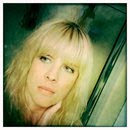I have always been fascinated by the intersection of fashion and art. No matter what field you practice, what passions you have, or what your interests are, it cannot be denied that at some point, all things converge and influence each other (economics and architecture, religion and literature, technology and medicine, fashion and EVERYTHING!). This is the first of what will be many posts on the specific relationship between art (photography, painting, sculpture, architecture, etc.) and fashion. Thinking about these things isn't only great fun, but informs trends and the overarching definition of STYLE.
The first artist I thought of while pondering this idea was Cindy Sherman. Her images speak directly to fashion, in my opinion, as they distort traditional images of women through the use of "costumes". One could think of fashion as a costume - a constructed image projected to the world whose function is twofold - to mask and reveal certain parts of the self. We then simultaneously become self and other, a predicament which is nothing if not unreliable. Cindy Sherman certainly comments very loudly about the instability of "image". Fashion allows us to play with this unreliability and construct various personalities.
While researching the Fall 2010 runway, one trend in particular made me think of Sherman's images - the retro, ladylike, peplum cuts that harken to the hysterical housewife of the 1950s. Looking at fall 2010 fashion as Sherman's photography side by side, the irony there is clear. Women of 2010 are no longer forced to wear the "perfect lady" costume, complete with coiffed hair and subservient demeanor. Because this is no longer a reality, fashion can appropriate it as fantasy, just as Sherman reveals the hysteria behind the costume, liberating women and bringing together reality and fantasy.
Looks from Celine, Prada, Marc Jacobs, Prabal Gurung, Dries Van Noten
images from style.com
While researching the Fall 2010 runway, one trend in particular made me think of Sherman's images - the retro, ladylike, peplum cuts that harken to the hysterical housewife of the 1950s. Looking at fall 2010 fashion as Sherman's photography side by side, the irony there is clear. Women of 2010 are no longer forced to wear the "perfect lady" costume, complete with coiffed hair and subservient demeanor. Because this is no longer a reality, fashion can appropriate it as fantasy, just as Sherman reveals the hysteria behind the costume, liberating women and bringing together reality and fantasy.
images from style.com
Cindy Sherman has made a point of defying categorization as a mere photographer. Since the 1970s, she has pushed the boundaries of the medium by inserting herself as her own model in order to explore the complexities of female subjectivity in a postmodern age. Her Film Stills seem to reference the work of cinema’s elite (e.g. Hitchcock and Godard), and yet they also retain a certain ambiguity that insists the viewer consider aesthetics over narrative. The (non)magic of these images lies in an arrested experience that is at once distinct and anonymous – we are left with a picture, a seemingly interrupted instant, that reminds us of the vicissitudes of advertizing and entertainment as the artist re-presents herself 'honestly' through repetition and disguise; these methodically constructed scenes not only ask us to question everyday masquerades through their apparent snap shot approach, but also criticize what has been a patriarchal and canonical culture industry. Her later works in color often accomplish this more directly by making clear reference to Old 'Master' paintings as well as to the fashion industry. These almost grotesque assemblages highlight what have been the underlying ramifications of women’s portraiture throughout history; her poses and props, disquieting in their mimicry, are experimented with and explored in order to blur the lines between theatre, painting, and photography. Fundamentally, by turning the lens on herself, Sherman captures the question of what it means to be looking – the gaze of the viewer becomes politically charged.
Essay by my dear friend and art expert Dr. Wood Roberdeau
images from: emmanichells.files.wordpress.com
blog.danpontingstudio.com
www.cvm.qc.ca
www.famozz.com




No comments:
Post a Comment